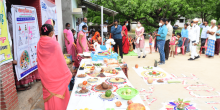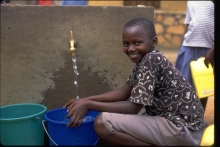Reducing childhood stunting in India: Insights from four subnational success cases

Global success case analyses have identified factors supporting reductions in stunting across countries; less is known about successes at the subnational levels. We studied four states in India, assessing contributors to reductions in stunting between 2006 and 2016. Using public datasets, literature review, policy analyses and stakeholder interviews, we interpreted changes in the context of policies, programs and enabling environment. Primary contributors to stunting reduction were improvements in coverage of health and nutrition interventions (ranged between 11 to 23% among different states), household conditions (22–47%), and maternal factors (15–30%). Political and bureaucratic leadership engaged civil society and development partners facilitated change. Policy and program actions to address the multidimensional determinants of stunting reduction occur in sectors addressing poverty, food security, education, health services and nutrition programs. Therefore, for stunting reduction, focus should be on implementing multisectoral actions with equity, quality, and intensity with assured convergence on the same geographies and households.




